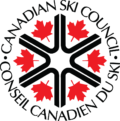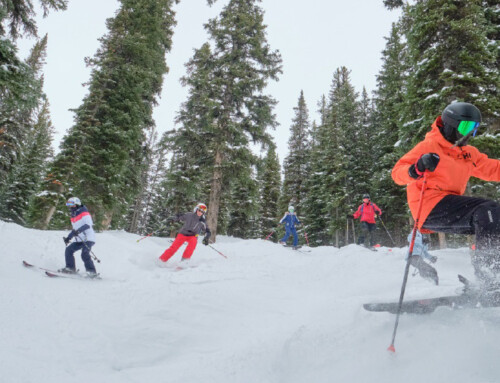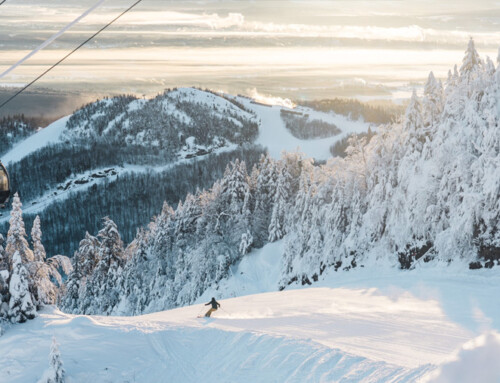Skier visits for the 2022/23 season set a new modern (post 2000) record for the Canadian Industry. The rise in domestic skier visits combined with modest growth in the USA and International visitor market have boosted skier visits to over 21 million.
 In general, Canadian ski areas benefited from the relatively buoyant economy and mostly favourable weather patterns. With some regional variation Canada was well-positioned to gain from positive economic factors including a lack of any pandemic restrictions, stable consumer confidence, low unemployment, growing stock market, and favourable exchange rate. The eastern part of the country, mostly Ontario, was hampered by unseasonably warm temperatures in December and parts of January that certainly dampened overall visitation. The West was blessed with significant early and late snowfall which brought about early opening and late closing dates at many ski areas.
In general, Canadian ski areas benefited from the relatively buoyant economy and mostly favourable weather patterns. With some regional variation Canada was well-positioned to gain from positive economic factors including a lack of any pandemic restrictions, stable consumer confidence, low unemployment, growing stock market, and favourable exchange rate. The eastern part of the country, mostly Ontario, was hampered by unseasonably warm temperatures in December and parts of January that certainly dampened overall visitation. The West was blessed with significant early and late snowfall which brought about early opening and late closing dates at many ski areas.
Global Visits
Winter mountain destinations are a major sector of the tourism industry and offer opportunities to ski and snowboard throughout the world, all year long. The 2023 International Report on Snow & Mountain Tourism mentioned, “There are currently 68 countries in the world that offer equipped outdoor ski areas covered with snow . . . Taking into account indoor facilities, mountaineering-only areas, and other types of facilities or amenities (such as dry slopes), the figure can be as high as 100 countries . . . about 2,000 ski areas (with four or more lifts) have been identified worldwide.” The same report estimates worldwide skier visits at only more than 370 million (up from 201 million) in 2020/21.
US Skier Visits Grow Again
The US market grew strongly, again, in 2022/23, to end the season at 65.4 million skier visits. Above average snowfall in key regions such as the Rockies was the largest contributing factors to this upward change, reinforcing the value of positive weather. The US remains the global leader in skier visits per country; Canada is seventh worldwide.
Canadian Visits Up
Canadian skier visits (excluding Nordic and Heli) were 21.069 million. Domestic increased to 19.17 million skier visits, up from the previous record of 18.6 million recorded in 2021/22.
International visits for 2022/23 totaled 1.8 million. Border restrictions had played an enormous part in the decline in US and international visitation over the past 3 years. While the growth in US and international visits is a positive sign, the total remains behind the pre-pandemic numbers. The US is still down 19% and the International market lags pre-pandemic highs by 25%. Currency exchange rates and the new multi-resort passes—mainly Ikon Pass (Ikon) and Epic Pass (Epic)—should help drive the international visitor (visitors from outside of Canada) in coming years.
The Canadian Ski Council (CSC) looks at the overall size of the market in two distinct groups: available (potential) market and active (actual) market. In terms of total available market, the CSC research estimates that up to 21% of the Canadian population (8.0 million people) has tried or is actively engaged in snow sports. Of the active market (those who have purchased a lift ticket in the past season), the CSC estimates that in 2022/23, there were 2.8 million active Canadian skiers and snowboarders. Up 100,000 active (domestic) participants from the previous season.
Demographically speaking the Canadian ski market continues to age. The average age of the Canadian consumer moved upward again in 2022/23 to 42.9 years due to declines in the 17 and under and the 18-34 groups. As this is the future of Canadian snow sports consideration should be given to ensuring the long-term participation (and growth) of the younger skier/rider market.
The Canadian Ski Council has created the “Canadian Model for Growth” as a tool to measure certain aspects of the domestic skier market. This tool defines a skier or rider in one of 4 key segments based on participation. Beginner (new to the sport), Core (5 seasons of continuous participation, Lapsed (no longer participating) and Revival (have dropped out within the last 5 years and now returned) are the key aspects of this tool.
Over the last 18 seasons, the size of the core segment has declined by 7 percentage points to 57% of visits. The beginner and revival segments have grown by 2 and 5 percentage points respectively. The net effect of this change is to place more Canadian skiers (43% of skiers or 8.4 million visits) into a relatively volatile segment of the market. Retention of these participants could be greatly affected by external shocks to the market.
At first glance, the ski industry in Canada appears to be in good health. Even so, significant headwinds could be part of the future. The effects of seasonal weather variation combined with increasing labour and energy costs, and the changing demographics of participants make up challenges that the industry will have to face in the next few seasons.
Members: to receive the full 30 page report – reach out to programsupport@skicanada.org
Not a member and want the report – send us an email at help@skicanada.org








